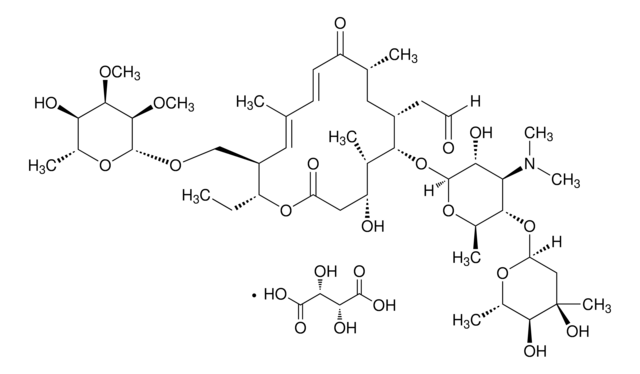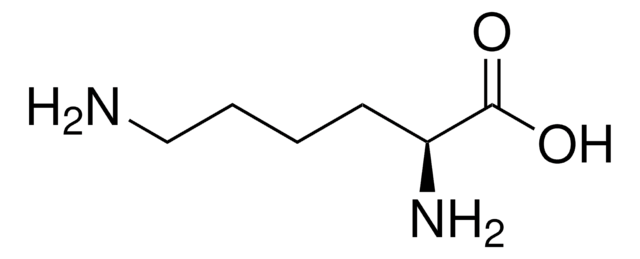C8615
CXCL16 human
≥97% (SDS-PAGE), recombinant, expressed in E. coli, lyophilized powder, suitable for cell culture
Synonym(s):
CXC chemokine ligand 16
Sign Into View Organizational & Contract Pricing
All Photos(1)
About This Item
Recommended Products
Product Name
CXCL16 human, recombinant, expressed in E. coli, lyophilized powder, suitable for cell culture
biological source
human
Quality Level
recombinant
expressed in E. coli
assay
≥97% (SDS-PAGE)
form
lyophilized powder
potency
2.5-12 ng/mL
mol wt
predicted mol wt ~10.1 kDa
packaging
pkg of 25 μg
storage condition
avoid repeated freeze/thaw cycles
technique(s)
cell culture | mammalian: suitable
impurities
endotoxin, tested
UniProt accession no.
storage temp.
−20°C
Physical form
Lyophilized from a 0.2 μm filtered solution in phosphate buffered saline containing 1.25 mg bovine serum albumin.
Analysis Note
The biological activity is measured by its ability to induce chemotaxis of mouse CXCR6 transfected BaF/3 cells.
Storage Class
13 - Non Combustible Solids
wgk_germany
WGK 3
flash_point_f
Not applicable
flash_point_c
Not applicable
ppe
Eyeshields, Gloves, type N95 (US)
Choose from one of the most recent versions:
Already Own This Product?
Find documentation for the products that you have recently purchased in the Document Library.
M Matloubian et al.
Nature immunology, 1(4), 298-304 (2001-03-23)
We describe a protein with the hallmarks of a chemokine, designated CXCL16, that is made by dendritic cells (DCs) in lymphoid organ T cell zones and by cells in the splenic red pulp. CXCL16 contains a transmembrane domain and both
Hina Mir et al.
Oncotarget, 6(12), 9985-9998 (2015-04-19)
Lung cancer (LuCa) is the leading cause of cancer-related deaths worldwide regardless of the gender. High mortality associated with LuCa is due to metastasis, molecular mechanisms of which are yet to be defined. Here, we present evidence that chemokine receptor
Our team of scientists has experience in all areas of research including Life Science, Material Science, Chemical Synthesis, Chromatography, Analytical and many others.
Contact Technical Service







